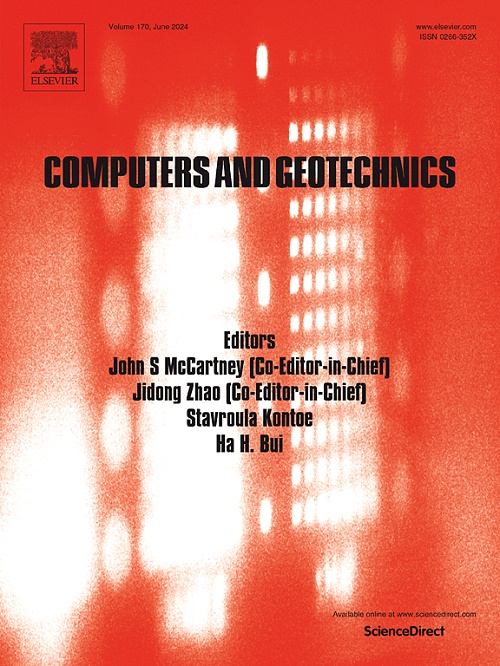Experimental and MPM modelling of widened levee failure under the combined effect of heavy rainfall and high riverine water levels
IF 5.3
1区 工程技术
Q1 COMPUTER SCIENCE, INTERDISCIPLINARY APPLICATIONS
引用次数: 0
Abstract
The practice of widening levees to mitigate frequent river flooding is globally prevalent. This paper addresses the pressing issue of sand-filled widened levee failures under the combined effect of heavy rainfall and high riverine water levels, as commonly observed in practice. The primary objective is to illuminate the triggering mechanism and characteristics of such levee failures using the well-designed physical model experiment and Material Point Method (MPM), thus guiding practical implementations. Experimentally, the macro-instability of the levee, manifested as slope failure within the sand-filled widened section, is primarily triggered by changes in the stress regime near the levee toe and continuous creep deformation. Upon failure initiation, the levee slope experiences a progressive failure mode, starting with local sliding, followed by global sliding, and ultimately transitioning into a flow-like behaviour, which characterises the slide-to-flow failure pattern. The slope failure along the interface between the original and new levees is the result of shear deformation rather than the cause. Parametric studies conducted using the calibrated MPM model reveal a critical threshold for the widening width, beyond which the volume of sliding mass and travel angle exhibit no further variation. Increasing the cohesion of the river sand used for levee widening demonstrates the most pronounced improvement in levee stability in the face of the combined effect of intense rainfall and elevated river levels. The MPM-based evaluation of common slope protection measures demonstrates the superior protective benefits of grouting reinforcement and impervious armour layer protection, providing valuable insights for reinforcement strategies in levee engineering applications.
求助全文
约1分钟内获得全文
求助全文
来源期刊

Computers and Geotechnics
地学-地球科学综合
CiteScore
9.10
自引率
15.10%
发文量
438
审稿时长
45 days
期刊介绍:
The use of computers is firmly established in geotechnical engineering and continues to grow rapidly in both engineering practice and academe. The development of advanced numerical techniques and constitutive modeling, in conjunction with rapid developments in computer hardware, enables problems to be tackled that were unthinkable even a few years ago. Computers and Geotechnics provides an up-to-date reference for engineers and researchers engaged in computer aided analysis and research in geotechnical engineering. The journal is intended for an expeditious dissemination of advanced computer applications across a broad range of geotechnical topics. Contributions on advances in numerical algorithms, computer implementation of new constitutive models and probabilistic methods are especially encouraged.
 求助内容:
求助内容: 应助结果提醒方式:
应助结果提醒方式:


